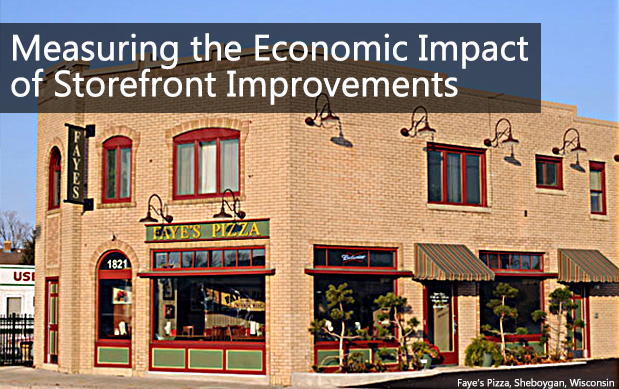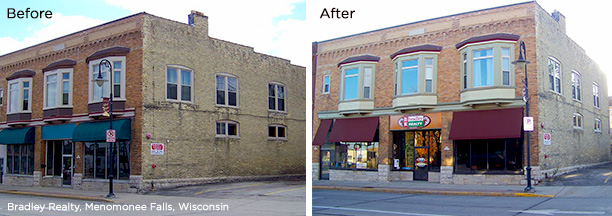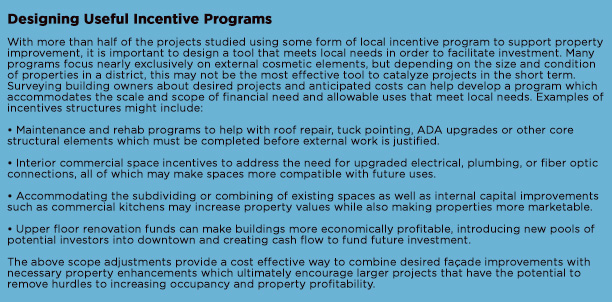Announcing the 2025 Science Discovery on Main Street Implementation Grantees
Meet the seven grantees of the 2025 Science Discovery on Main Street Implementation Grants!

Marion, Iowa © Tasha Sams
We work in collaboration with thousands of local partners and grassroots leaders across the nation who share our commitment to advancing shared prosperity, creating resilient economies, and improving quality of life.

Emporia, Kansas © Emporia Main Street
Made up of small towns, mid-sized communities, and urban commercial districts, the thousands of organizations, individuals, volunteers, and local leaders that make up Main Street America™ represent the broad diversity that makes this country so unique.

Chicago, Illinois © Main Street America
Looking for strategies and tools to support you in your work? Delve into the Main Street Resource Center and explore a wide range of resources including our extensive Knowledge Hub, professional development opportunities, field service offerings, advocacy support, and more!

Waterloo, Iowa © Main Street Waterloo
Your one-stop-shop for all the latest stories, news, events, and opportunities – including grants and funding programs – across Main Street.

Kendall Whittier — Tulsa, Oklahoma © Kendall Whittier Main Street
Join us in our work to advance shared prosperity, create strong economies, and improve quality of life in downtowns and neighborhood commercial districts.

Façade appearance is a critical aspect of the overall aesthetic appeal and unique character of downtown. Designing, promoting and facilitating quality historic preservation and façade improvement projects are common activities undertaken by design and economic restructuring committees, and significant effort is dedicated to developing tools to make this type of project simpler and less costly for property owners. While reducing the burden to businesses and property owners considering investment is a worthy objective on its own, the decision to invest in a property will remain an economic one, based on the individual financial situation and property condition. Fortunately, the results of a recent case study analysis provide a wealth of individual business experiences that make the business-based decision to invest much simpler.
Although it seems intuitive that an aesthetically appealing storefront will translate into additional customers and sales, there has been little research done that would allow a business to estimate the return on this investment. One frequently cited University of Wisconsin Extension study on the topic dates from 1986. In order to provide updated information and relevant information, Wisconsin Main Street partnered with the UW Extension on an updated 2014 study. The resulting report "An Analysis of Downtown Storefront Improvements: A Selection of Wisconsin Case Studies", although not a statistically significant sample, provides multiple present day insights on the value of property improvements from the perspective of the individual property or business owner. The survey included 24 interviews with property owners from around the state who recently completed projects and were able to provide information on the cost and scope of the projects as well as business operations before, during and after the improvements. Interview subjects included a broad cross section of industry types and also included projects in communities of all sizes. The results validate the findings of the original study while also providing additional context for business owners contemplating an investment.
The most compelling result from the study was the confirmation that even a small investment in the exterior of a property has measurable impacts on business sales as well as on the ability of a business to attract new customers. The vast majority of businesses (80%) saw an increase in the number of first time customers, with an average of 10 percent more new customers. An even larger number (90%) experienced increased overall sales, with an average increase of 20 percent.
While nearly all case studies resulted in positive economic benefits for commercial space performance, some types of businesses benefitted to a greater degree than others. For instance, restaurants found the greatest positive benefits, with personal and professional service businesses experiencing positive but slightly lesser returns in the short term. Property owners with upper floor residential units also indicated increased interest from prospective tenants. Not surprisingly, businesses that simultaneously invested in interior improvements and marketing initiatives together with façade improvements experienced greater benefits than those with exterior improvements alone. However, it is important to keep in mind that a façade update cannot make up for a poor business plan, and that different types of businesses will experience different levels of benefits depending on the nature of their business. Representative results are illustrated in the excerpted findings below.
Case Study 1: Bagels & More
Community: Beloit, Pop 36,888
Cost: $25,000
Impact: >10% increase in first-time customers, 20% increase in sales
Case Study 2: Sequels
Community: Monroe, Pop 10,827
Cost: $7,000
Impact: 15-25% increase in first-time customers, 10-15% increase in property value
Case Study 3: Bradley Realty
Community: Menomonee Falls, Pop 35,924
Cost: $20,000
Impact: >25% increase in first-time customers, 30% increase in residential rents.

Although the financial returns are undeniable, a full fifty percent of the projects relied on local incentive grant and loan programs to make the project a reality. A majority of projects utilized multiple funding sources including local incentives, private bank financing, historic tax credits and other equity sources in order to complete a larger and more cost effective project. Designing local tools and financing structures to support these projects is essential for both jump starting and sustaining investment in historic properties. The findings from this study can be used to help better connect local incentive programs with desired outcomes as well as to convince individual businesses and property owners to take the leap and invest in their property. Where a typical facade incentive program is designed based on desire to achieve property appreciation and higher economic rents, these goals often cause concern among the audiences they are hoping to entice. In many cases, businesses (especially those that rent) are hesitant to improve properties that they do not own, fearing that rents will increase beyond what they can afford on an upgraded space. Similarly, property owners similarly fear negative tax implications from substantial property improvements will not be offset by increased rents. However, this study demonstrated that although property values and rents do increase as a result of improvements, in no instances were these increases not offset by comparable income gains at the business or property.

The study also provided unique insights into individual returns on façade investment, it also reinforced many commonly held beliefs regarding broader community benefits that can result from individual property improvements. Multiple interviewees identified one or more of these intangible ancillary benefits as some of the most rewarding elements of their project, over and above business revenues. Commonly identified benefits included;
• Increased sales and traffic at adjacent businesses,
• Additional interest in vacant commercial spaces in adjacent buildings,
• A catalytic effect, with one or more improvements to properties elsewhere in downtown.
• Gains in community pride and civic appreciation among businesses, property owners and customers.
Ultimately, the study was able to demonstrate that investing in external property improvements on downtown properties is justified not just as a community development tool but also from a business growth and expansion perspective. Organizations which are able to portray façade improvements as a calculated investment in enhancing the future of the business and increasing the value of individual properties will find it easier to catalyze investment to the benefit of the overall community.
Errin Welty is a Downtown Account Manager with the Wisconsin Economic Development Corporation, working with Main Street Communities, businesses and property owners on economic development projects. Errin has significant downtown experience, having been on staff with downtown organizations in both St. Cloud, MN and Denver, CO, with other relevant experience in real estate development and brokerage and market analysis.